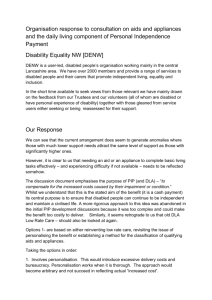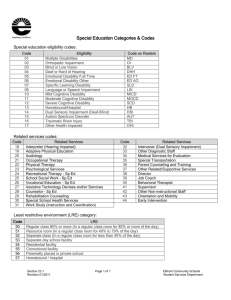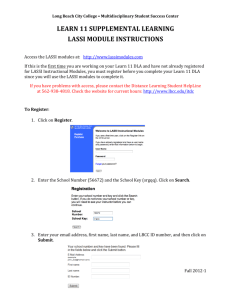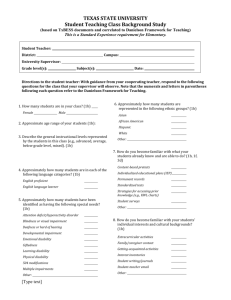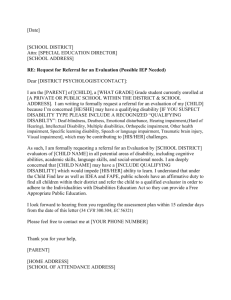1a - Disability Living Allowance
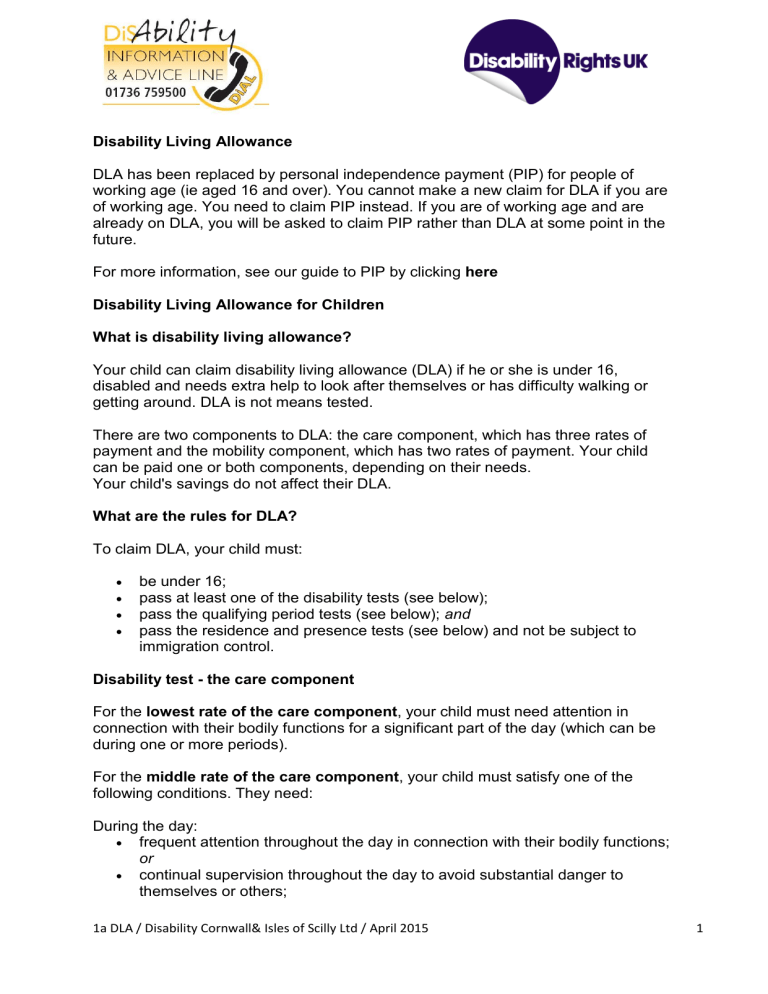
Disability Living Allowance
DLA has been replaced by personal independence payment (PIP) for people of working age (ie aged 16 and over). You cannot make a new claim for DLA if you are of working age. You need to claim PIP instead. If you are of working age and are already on DLA, you will be asked to claim PIP rather than DLA at some point in the future.
For more information, see our guide to PIP by clicking here
Disability Living Allowance for Children
What is disability living allowance?
Your child can claim disability living allowance (DLA) if he or she is under 16, disabled and needs extra help to look after themselves or has difficulty walking or getting around. DLA is not means tested.
There are two components to DLA: the care component, which has three rates of payment and the mobility component, which has two rates of payment. Your child can be paid one or both components, depending on their needs.
Your child's savings do not affect their DLA.
What are the rules for DLA?
To claim DLA, your child must:
be under 16;
pass at least one of the disability tests (see below);
pass the qualifying period tests (see below); and pass the residence and presence tests (see below) and not be subject to immigration control.
Disability test - the care component
For the lowest rate of the care component , your child must need attention in connection with their bodily functions for a significant part of the day (which can be during one or more periods).
For the middle rate of the care component , your child must satisfy one of the following conditions. They need:
During the day:
frequent attention throughout the day in connection with their bodily functions;
or continual supervision throughout the day to avoid substantial danger to themselves or others;
1a DLA / Disability Cornwall& Isles of Scilly Ltd / April 2015 1
or at night:
prolonged or repeated attention in connection with their bodily functions; or
another person to be awake for a prolonged period or at frequent intervals to watch over them in order to avoid substantial danger to themselves or others.
For the highest rate of the care component , your child must satisfy either of the following. They:
have one of the day needs be terminally ill. and one of the night needs shown above; or
In addition to the above tests, your child’s care, supervision or watching-over needs must also be substantially greater than those of a child of the same age who is in normal physical and mental health.
What do the terms in the care component disability tests mean? needs - This is help that is reasonably needed, not what is given, nor what is medically essential. This is help to lead as normal a life as possible. This includes help your child needs outside your home. For example they can be given help to take part in ‘reasonable’ social activities. attention - This is help of an active nature required to be given in your child's physical presence. This can include help given to wash, dress or to go to the toilet
(providing the help required is substantially greater than that of a child of the same age who is in normal physical and mental health). It can also be more indirect help, such as signing, reading aloud or prompting and encouragement. bodily functions - These include hearing, eating, seeing, washing, reading, communicating, walking, drinking, sitting, sleeping, dressing or undressing, using the toilet, shaving, shampooing and help with medication. Anything to do with your child’s body and how it works can count. significant - This is around an hour in total. frequent - Means more than twice. throughout - This means spread over the day. continual - Means regular checking but not non-stop supervision; it does not have to be constant. supervision - This is watching over, ready to intervene. substantial danger - The danger must be real, not just remotely possible. prolonged - Means some little time (at least 20 minutes).
1a DLA / Disability Cornwall & Isles of Scilly Ltd 2
repeated - Means two or more times. night - This is when the household has closed down for the night. It is generally the time when an adult is in bed but must be more or less within night-time hours - generally between the hours of 11pm and 7am. terminally ill - Your child is considered to be terminally ill if they are suffering from a progressive disease where death can be reasonably be expected within six months.
Disability test - the mobility component
For the lower rate of the mobility component , your child must:
need guidance or supervision with walking on unfamiliar routes because of their mental or physical disablement. He or she must need substantially more guidance or supervision than a child of the same age who is in normal physical or mental health.
Your child cannot receive the lower rate of the mobility component until they reach the age of five.
For the higher rate of the mobility component , your child must satisfy one of the following conditions. They must:
be unable to walk;
be virtually unable to walk;
the exertion required to walk would constitute a danger to their life or would be
likely to lead to a serious deterioration in their health;
have had both legs amputated (or missing from birth) at or above the ankle; qualify for the highest rate of the DLA care component, be severely mentally impaired and show disruptive behaviour;
have a severe visual impairment; or
be both blind and deaf and need the assistance of another person to walk out of doors.
Your child cannot receive the higher rate of the mobility component until they reach the age of three.
Any artificial aid used, such as limbs or walking frames, are taken into account when considering your child's mobility needs except for cases where they are claiming on the grounds that they have had both legs amputated or missing.
What do the terms in the mobility component disability tests mean? guidance or supervision on unfamiliar routes - Your child can get the lower rate of the mobility component if they can walk but need someone on hand to guide or supervise them. If he or she is blind, has learning disabilities or is mentally ill they may qualify for this rate. The test is based on their ability to cope with unfamiliar
1a DLA / Disability Cornwall & Isles of Scilly Ltd 3
routes (for example they may be able to find their way to your local shop but become confused, lost or anxious if walking in a strange place). virtually unable to walk - This test looks at your child's ability to walk out of doors on a normal flat surfaced pavement or road. The following factors are taken into account :
the distance they can walk;
the speed of their walking;
the length of time it takes; and
the manner of their walking.
When stating how far your child can walk, note that any walking done whilst they are experiencing ‘severe discomfort’ does not count. For example; your child may be able to walk 100 metres, but can only do the last 80 metres in severe discomfort. It would be reasonable in this case to say that they can only walk 20 metres. Pain and breathlessness are also considered when assessing whether or not your child experiences severe discomfort. severe mental impairment and disruptive behaviour - Severe mental impairment refers to someone who ‘has arrested or incomplete physical development of the brain resulting in severe impairment of intelligence and social functioning’ .
Conditions that start later in life, such as recent brain damage do not count.
The disruptive behaviour must be extreme, require physical restraint to prevent physical injury or damage to property and also require someone to watch over your child whenever they are awake.
Severe impairment of intelligence is determined in many ways. It can be through an
IQ test or by assessing someone's ‘useful intelligence’ - the ability to function in a real-life context. severe visual impairment - Your child must be certified by a consultant ophthalmologist as severely sight impaired or blind and are severely visually impaired. Your child is severely visually impaired if:
they have visual acuity, with appropriate corrective lenses if necessary, of less than 3/60; or
they have visual acuity of 3/60 or more, but less than 6/60, with appropriate corrective lenses if necessary; and a complete loss of peripheral visual field; and a central visual field of no more than 10 degrees in total.
If your child has a CVI certificate of visual impairment, this may provide enough information to satisfy this test but if not, or if you tell the DWP your child's eyesight has worsened, your child may be referred for a sight test. blind and deaf - To satisfy this, your child must have 100% disablement from loss of sight and 80% disablement from loss of hearing.
1a DLA / Disability Cornwall & Isles of Scilly Ltd 4
The qualifying period tests
Your child will need to have satisfied the disability tests for three months before they will be paid and must also be likely to continue to satisfy these tests for at least six months after the date of their first payment. This rule does not apply if your child is terminally ill.
The residence and presence tests
To qualify for DLA, your child will have to satisfy the residence and presence tests.
For this they must:
normally have been present in Great Britain for 104 weeks out of the 156 weeks before claiming (two out of the last three years). If your child is under 6 months old, they only need to be present for 13 weeks up until they are one year old. If your child is aged between 6 and 36 months, they only need to have been present for 26 weeks in the last 156 weeks; and
be habitually resident.
'Present' means physically present in the UK. There are specific rules that may allow your child to be treated as present during a temporary absence.
If your child is terminally ill, they only have to be currently present in the UK - they do not need to have been present in Great Britain for 104 weeks out of the 156 weeks before claiming.
The habitual residence test is a test to see if your child normally lives in the United
Kingdom, the Channel Islands, the Republic of Ireland or the Isle of Man. There is no legal definition of 'habitual residence' . Relevant factors are where your child normally lives, where they expect to live in future, their reasons for coming to this country, the length of time spent abroad before they came here, and any ties they still have with the country they have come from.
The rules for residence and presence are complicated. For more information contact an adviser on 01736 759500 or email: advice@disabilitycornwall.org.uk
How much is DLA?
The weekly rates for the care component are: lowest rate - £21.55 (£21.80 from April 2015) middle rate - £54.45 (£55.10 from April 2015) highest rate - £81.30 (£82.30 from April 2015)
The weekly rates for the mobility component are: lower rate - £21.55 (£21.80 from April 2015) higher rate - £56.75 (£57.45 from April 2015)
Your child can only receive one rate from each component.
1a DLA / Disability Cornwall & Isles of Scilly Ltd 5
How to claim
You can call and ask for a form DLA1A.
Telephone: 0345 712 3456
Textphone: 0345 722 4433
Monday to Friday, 8am to 6pm
If you return the completed form within six weeks, it will be backdated to the day you requested it.
You can download a Disability Living Allowance claim pack at: www.gov.uk/government/publications/disability-living-allowance-for-children-claimform
If you need any further support or information please contact our
Disability Information Advice Line on 01736 759500 or you can refer directly to the link below: www.disabilityrightsuk.org
We make every effort to ensure that the information on our website is accurate and up to date and do not accept liability for any loss or damage or inconvenience arising as a consequence of any use of or the inability to use any information on this website. Visitors who use this website and rely on any information do so at their own risk.
Did you find this guide useful? Yes / No
Reviewed April 2015
1a DLA / Disability Cornwall & Isles of Scilly Ltd 6
